#Eadward Muybridge
Text
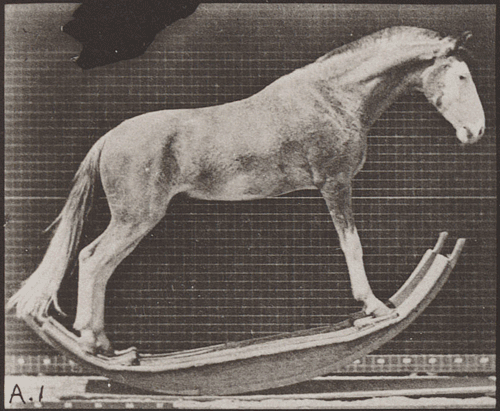
Hornet the rocking horse
By: Eadward Muybridge
1885
3K notes
·
View notes
Text
Eadward Muybridge - study of animal locomotion
14 notes
·
View notes
Text
1) Eadward Muybridge has an imdb page
2) People are brutally rating his recordings

3 notes
·
View notes
Text
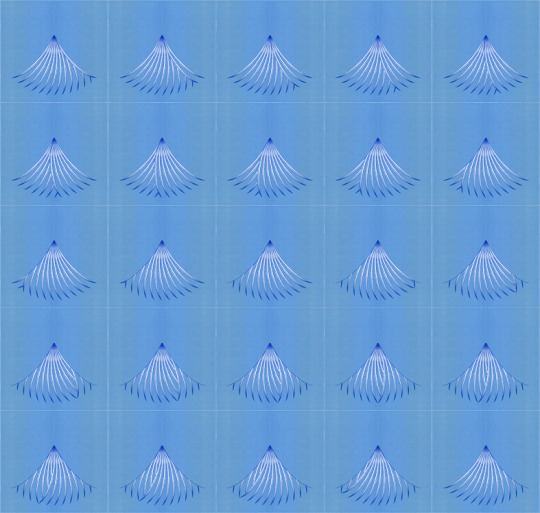
page 548 - Eadward Muybridge photographs of a mop in action, swishing a kitchen floor clean.
#economics#economist#economy#international#international comparison of income inequalities#after tax incomes adjusted for standard household size#1972#households#accumulated#uk#canada#sweden#united states#muybridge#photography#motion capture#stop motion#pioneering#mop#clean#cleanliness#kitchen#tidy#zen#cells#ai
2 notes
·
View notes
Text
Suspense in Sport - Anticipating Impact
I designed this experiment to examine the different facial expressions and responses made when anticipating impact. When sparring, many feelings come flying to me at once; exhilaration, anxiety, fear, suspense and excitement among others. I am very interested in how our bodies respond to expected and unexpected triggers. Tensing, flinching, dodging, giggling, twitching and blinking are some of the most common physical responses that occur during moments of panic. I wanted to capture some of the reactions and gestures we make when we are expecting a blow or a hit to the face/body. I got a few volunteers to lie beneath a boxing glove that was hanging from the ceiling with string. I released the glove from a height at great speed as to allow it to plummet towards the volunteer’s face. The objective was to induce a set of feelings and responses from the volunteers, similar to those experienced during a fight, when preparing for impact.
The presentation of this video/ experiment is inspired by the photography of Eadward Muybridge, an artist/ photographer who was suggested to me as someone to research for my project. Although the still images and photography of the human figure in different stages of a physical performance wasn't something I was interested in recreating, I enjoyed the simplicity and clarity of the shots in the b/w, grid format.

3 notes
·
View notes
Text
Eadward muybridge
the artist Edward muybrige made a new light to animation where as he decided to try and figure out if a horse lifts all its legs off the ground, which we found it does
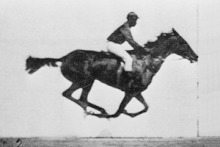
0 notes
Text
Eadweard Muybridge & Stephen E White
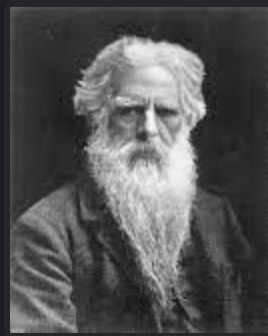


Eadward Muybride was the inventor of the Zoopraxiscope and pictures in motion, This laid down the foundation of animation.

Stephen E Wihite created the GIF format allowing digital animations to be made, This was a big change Because this allowed anyone to make animation digitally not just movie Studios.
0 notes
Text
Early Cinema and why it was important
The relevance of pre-cinematic technologies and early cinema for movies and moving-image technology today is that it helped shape and create what we watch today and if we are ever stumped on what to create, we can always go back to the basics and the beginning in order to start fresh.
Films first got their start from the ideas of persistence of vision and the phi phenomenon. Persistence of vision causes the brain to retain images cast upon the retina of the eye for a fraction of a second beyond their disappearance from the field of sight. The phi phenomenon creates apparent movement between images when they succeed one another rapidly. These two phenomena come together to form the succession of still frames on a film strip to represent continuous movement when projected at the proper speed (Britannica). Early inventions such as the phenakistoscope and zoetrope tried to capture this effect. Positive photographic processes and negative photographic processes were created as well. Eadward Muybridge came up with the technology of series photography, being able to “film” a horse riding along a track.
Edison took what was given and created the phonograph and had his assistant, Dickinson, create the motion-picture camera. While his bits of film were short and simple, such as an acrobat performance, topsy the elephant being electrocuted, a kiss, etc. they were part of the building blocks of film. Lumiére’s films such as the Arrival of the Train had fantastic quality for the time and Hoser got Hosed showed the first hints of comedy. A Trip to the Moon was the spark that lit the science fiction genre, while the Great Train Robbery could be seen as one of the first action films as well as one of the first western films, beginning an interest in making films of danger, drama, and stakes.
“In the 1930s, when experimented television broadcasts had already launched in Europe and the United States using TV receivers with proper ‘screens’, ideas like handheld peep show televisions and wearable 3-D televisions and wearable 3D television spectacles were still presented.” This quote, as found by another peer, is an example of how earlier cinematic technologies shaped what we have today. The early ideas of film have been built upon for years, so that even in the 1930’s, 3D was an idea. Today, 3D is not only existent, but has gone beyond what the 1930s ever thought possible.
“Magic lantern projections provided domestic audiences an occasional opportunity to enjoy images in a social setting. The peepshow model provided an alternative, which, in spite of the different constitution of its apparatus, also emphasizes social rather than an individual mode of consumption.” This quote, as found by another peer, is another example of how early cinema is still influential today. The magic lanterns projection have been expanded upon and are what we call today, a movie theater. People can go and view films with large groups of people for an experience that heightens the film and makes it all the enjoyable.
The clip I have attached a link to below is from the movie Babylon. It is from the end of the film, where the main character, Manny, is sitting in a movie theater watching Singin 'in the Rain. Manny starts to get emotional as the film reflects his real life experiences in the movie industries when films were transitioning from silent to talkies. That in itself is an example of how early cinema evolved into what we know today. However, the clip brings even more as it shows a montage of images and clips, from the beginning of cinematic history and beyond. It is a direct example of how the early days helped shape what we know to be cinema today.
By: Callahan Coffey
https://www.youtube.com/watch?v=LI6TR5Wd28A
References:
https://www.britannica.com/art/history-of-the-motion-picture
https://www.loc.gov/item/96521477/
https://www.loc.gov/item/00694131/
https://www.youtube.com/watch?v=NoKi4coyFw0
https://youtu.be/1FAj9fJQRZA
https://youtu.be/aIT1mVegNM4
https://www.youtube.com/watch?v=xLVChRVfZ74
https://www.youtube.com/watch?v=y3jrB5ANUUY
0 notes
Text
Reading, 'A Brief History of Photography and Truth'
Touching on the foggy relationship between fact and fiction, photography and truth, history brings this debate decades before the invention and release of photoshop. Some spontaneous findings, while others were staged lies, the article deconstructed the past narratives about historical documented events that us photographers and editors alike don't know.
Early use of alterations and retouching techniques are seen in the following examples as they as they illustrate the constraints of photography and the need for continued development and refining of the medium to meet the desired standard of realism .
The question of a photograph being 'truthful' and 'realistic' spring up as the full reality of the scene, then and now, isn't entirely captured, even when it was understood that photography would offer the opportunity to capture moments in what was considered as the height of realism and truth.
The act of photo-manipulation has been solidified with, 'photoshop' established as a verb to mean to alter photographs and therefore embedded as a norm, however in contemporary standings, an image is still perceived as an authentic documentation of experiences and events, considering the popular mantra, ‘pics, or it didn’t happen’, a modern extension of the idea ‘the camera never lies’.
Boulevard du Temple
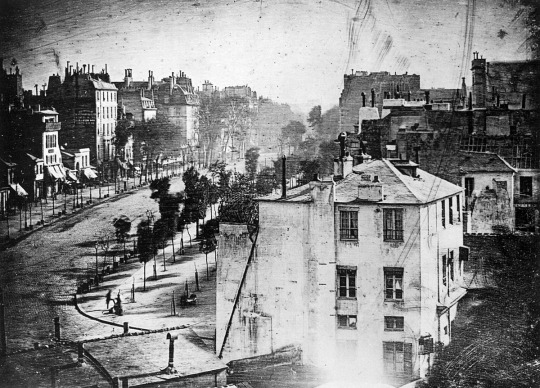
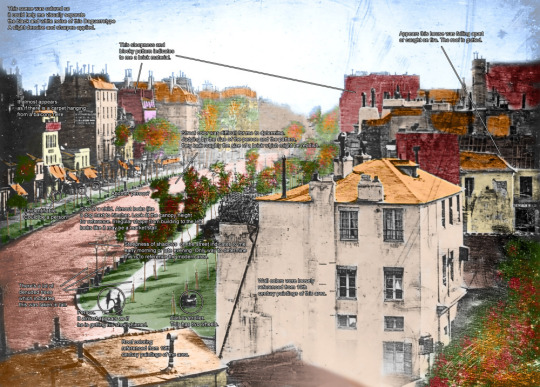
The limits of photography is illustrated through the art piece, Boulevard du Temple, 1838, as the need for advancement and developing of the medium to meet the desired standard of realism can be seen with the restrictions at the time. During the early years of the medium, photographers looked toward editing their pieces in regards to reflect a reality or idea, of what they saw to be accurate. These technical constraints impacted documentary photography.
Fading Away

To assert artistic potential and innovation, staging was a key technique at a time when photography was challenged.
'Fading Away', is a notable example as Henry Peach Robinson’s (1830-1901) 1858 photograph conveys a sick, young lady who is within the last moments of her life surrounded by distressed loved ones. Staged and constructed, the truthfulness of photography of the time was believed by critics. Robinson’s photograph blends truth and fiction as well as the potential of the defiance of contemporary debates on photography’s lack of artistry.
Eadward Muybridge, The Horse in Motion, 1878

A cool idea I stumbled upon this article was that of how the camera can 'see' what mere eyes cannot.
Further conversation about the function and position of photography was stimulated by the ongoing experimentation and advancement of camera technology. The idea that a camera can "see" was one of several concepts of perception that were frequently criticised. The human eye could undoubtedly discern more in the years after the development of photography in 1839 than the camera could. This activity is invisible to the human eye and cannot be seen. Now, the camera was able to 'see' more than a human eye could ever hope to. Is it more or less honest if the camera 'sees' more than the human eye?
The idea that the capacity to alter images became a selling feature for many professional photographers who provided portrait "retouching" services. Around the turn of the century, when studio photographers were at their most in demand, the job of "retoucher" was a common one in the field of photography. The picture negative was edited with brushes and knives to get the required results, such as chins being eliminated, waists being cropped, and wrinkles being smoothed. Women were thought to instinctively understand a sitter's wants and to have the feminine, delicate touch necessary for manipulating negatives, therefore they dominated the trade.
Another form of manipulating photos in the past was for propaganda use. The Great Purge was overseen by Nikolai Yezhov (1895–1940), who frequently posed for photos with Stalin. He was put to death in 1940 after losing favour. All subsequent photos that showed Yezhov were edited to make him disappear. This was a frequent practise that took place both publicly and privately and was thought to strengthen Stalin's popularity. People removed pictures of Stalin's political foes from their houses and possessions, even pictures of their own family members, out of fear of retaliation. [34] The purpose of erasing and altering images was to rewrite historical facts that had been recorded, offering evidence of the impact that photography is said to have in shaping perceptions of the past.
American Girl in Italy

This theory is related to how an image changes when it is published or viewed by the public; occasionally it assumes new identities and takes on characteristics that are different from the photographer's original intent. The context, location, and accompanying text of a photograph, whether it be in a newspaper, internet, or museum, may all have a significant impact on how it is interpreted and seen.
Ruth Orkin (1921–1985) captured the image of American Girl in Italy in 1951. The image depicts a woman strolling down a street while guys beckon and cry out to her. The image was used in a Cosmopolitan article encouraging people "Don't Be Afraid to Travel Alone" and was meant to capture a young woman's happy experience travelling alone in Italy. The photograph was later adopted to illustrate the street harassment and dangers facing women, especially women travelling alone.
Because of the seeming honesty and reality that were believed to be intrinsic to photography as a medium, it was easy to distort in the service of imposing a purported "truth," whether for propaganda, financial gain, colonial ideals, or to prove something that appeared impossible to establish. The concept of photography's "untruths" is maybe even more unclear.
These are more elusive and prompt considerations of what constitutes a "truth" as well as the function of photography in moulding truth-making.
It is really up to the viewer to believe or be convinced by the photographer of their purpose of capturing a moment. However, for the most part, I have learned a lot about how the history of manipulation developed from colours to cropping and other techniques.
0 notes
Text


Morgan horse "Occident" trotting with a sulky
By: Eadward Muybridge
1870s
56 notes
·
View notes
Text

"Athlete Catching and Throwing A Baseball"
Eadweard Muybridge (/ˌɛdwərd ˈmaɪbrɪdʒ/; 9 April 1830 – 8 May 1904, born Edward James Muggeridge) was an English photographer known for his pioneering work in photographic studies of motion, and early work in motion-picture projection. He adopted the first name "Eadweard" as the original Anglo-Saxon form of "Edward", and the surname "Muybridge", believing it to be similarly archaic.[1]
0 notes
Text
A Brief History of Photography and Truth
Pt 1
this article talks about how images throughout history have been edited or manipulated in one way or another to create a certain outcome in the picture. photographs and cameras have evolved throughout time because of this there were many different ways a photo would turn out when taken. this article talks about how when photographs were taken using the wet collodion they came out faster and more well-defined than they previously were. however, because of the brown tones of this new technology, it could not capture blue tones as well like the ocean and sky so as a result photographers altered the images to include this blue. these images were manipulated and although there was no ill intent or misinformation behind the manipulation this is an example of a photographer altering an image to express the scene they want. photographers also were able to combine 2 negatives to create a surreal image or paint things that weren't initially there onto the photos to make them look the way they wanted which is another way photos were edited before Photoshop. another reason early photographers altered their photos is that it was not easy to take a photo that documented a current event like a war. therefore a lot of war photos were tampered with. the two examples of this given in the article are Valley of the Shadow of Death by Roger Fenton and the photo of Sikander Bagh by Felice Beato.

it has been revealed that in these images the photographers have added physical objects into the photo to make them look more dramatic and convey the message they wanted to send. As the camera technologies continued to develop cameras were able to pick up more than the human eye as exampled by the series of images by Eadward Muybridge, The Horse in Motion. In these images, the horse is clearly captured in motion that a human eye can only see as a blur of colour. because of the new development of cameras seeing more than people naturally could it brought into question whether cameras are more or less reliable, to tell the truth. one of the main uses of cameras was to take portraits. portraits used to be painted and while this would take a long time to do it was also quite inaccurate and painted portraits were constantly painted to convey a message like how in most of Queen Elizabeth I's portraits her face was thought to have all been duplicated from a previous painting she thought looked the best. people thought the new photo portraits told the truth about who a person was at the moment it was taken. however in 1840, Hippolyte Bayard proved this wrong when in an act of dramatic pettiness he staged a portrait to make people think he had drowned himself for not getting the recognition he deserved when it came to contributions to photographic technology. mass-produced portraits took to popularity after the carte was invented as it made taking personal portraits very easy and cheap. people used these in many different ways often to take photos of where the subjects looked their best which are classic ol time photos we see the most from those times. these portraits in which people posed in their best clothes were themselves misrepresentations of what people actually looked like in their lives and so the article compares them to today's social media photos. cartes were also used to push political agendas often in a racist way with white and colonial supremacists taking photos of people of colour, particularly of African Americans during the Civil War and the indigenous people of Australia looking uncivilized to reduce them to savage stereotypes while ignoring any of their culture and contribution to the world so that the people taking the photos could justify their actions. altering photos later became a genuine profession as photo retouchers were hired to alter photos just like people do today.
Pt 2
in 1888 the Kodak 1 camera was invented. this camera took almost instant photos that you took to get developed by Kodak with a cheap price, the speed at which photos were taken and development service these cameras were easily accessible making them extremely popular and meaning anyone could take their own photos now. As a result of this easy access to cameras by the public, the increase in false images also rose. a genre of this manipulated photography was spirit photography in which people could use little-known techniques like double exposures to make it look like a ghostly figure was present in photos. people would pay these spirit photographers to take photos of their deceased loved ones. A huge part of this type of photography being believed was simply people's willingness to believe in otherworldly presences and finding photographs good enough evidence. with the invention of coloured photography, the old black-and-white images were now seen as the more truthful of the two even with all the information previously stated in these articles. coloured photography was seen as less believable especially since at the time coloured photos tended to look less natural and fake. however, with the invention of the Lumiere autochrome coloured photography became the more lifelike version of photos and therefore people started to trust coloured photographs more than previous photos. with the new camera technology, people saw it as the most reliable way to document the world around them. however, staging photos was still commonly done by photographers. in world war II as more and more photographers were accused of staging photos for propaganda and to create a narrative of victory and power people began to be more critical when it came to believing photographs. photographers were also able to manipulate images in the darkroom by adding elements from other negatives like smoke to create a more dramatic image or removing elements from the picture. a photograph can also have its meaning changed without any practical manipulation. the article talks of Ruth Orkins American Girl in Italy which shows a young woman walking down the street with men calling out to her. this photo was initially taken by her to show how fun it is to travel. later it was taken to show the dangers of being a woman alone in the street showing how the meaning of one picture can vary so much just by the context it is given
0 notes
Text
Eadward Muybridge - study of animal locomotion
4 notes
·
View notes
Text
Books Read/Reread, July/August 2022
Elvia Wilk, Death by Landscape
Elena Passarello, Animals Strike Curious Poses
Helen McDonald, Vesper Flights
Christina Tudor-Sideri, Under the Sign of the Labyrinth*
Sarah Kane, Blasted
Sarah Kane, Phaedra's Love
Sarah Kane, 4.48 Psychosis
Rebecca Solnit, River of Shadows: Eadward Muybridge and the Technological Wild West
Carmen Maria Machado, Her Body and Other Parties*
Shannon Mattern, Deep Mapping the Media City
Ada Límon, The Carrying
Kathryn Schulz, Lost & Found
Monica Black, A Demon-Haunted Land: Witches, Wonder Doctors, and the Ghosts of the Past in Post-WWII Germany
Robert Glück, Margery Kempe*
Sir Wallis Budge, Amulets and Talismans
Jim Vandehei, Mike Allen, and Roy Schwartz, Smart Brevity: The Power of Saying More With Less
Richard de Mille, The Don Juan Papers: Further Castaneda Controversies
Gilles Deleuze, Coldness and Cruelty*
Brandon LaBelle, Sonic Agency: Sound and Emergent Forms of Resistance
Benjamín Labatut, When We Cease to Understand the World
Stendhal, The Red and the Black*
Guy Cools, Performing Mourning: Laments in Contemporary Art
Michael P. Daley (ed.), Echoes of a Natural World
* = reread
1 note
·
View note
Photo
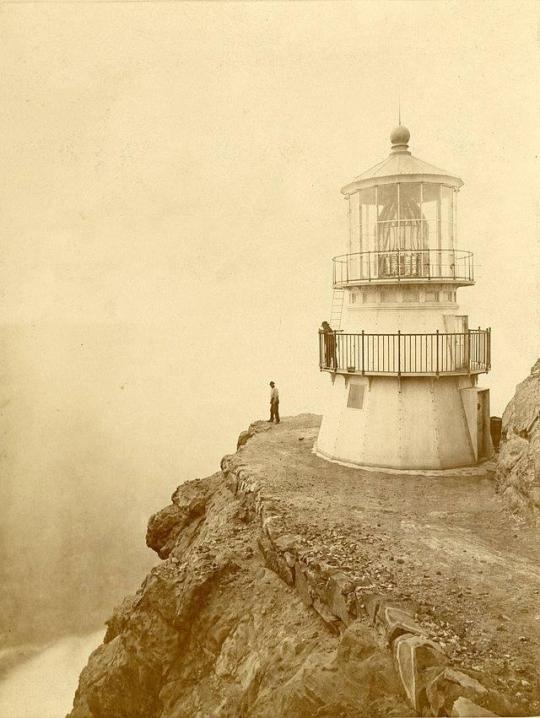
Eadward Muybridge - Pt. Reyes Lighthouse, California (1871)
22 notes
·
View notes